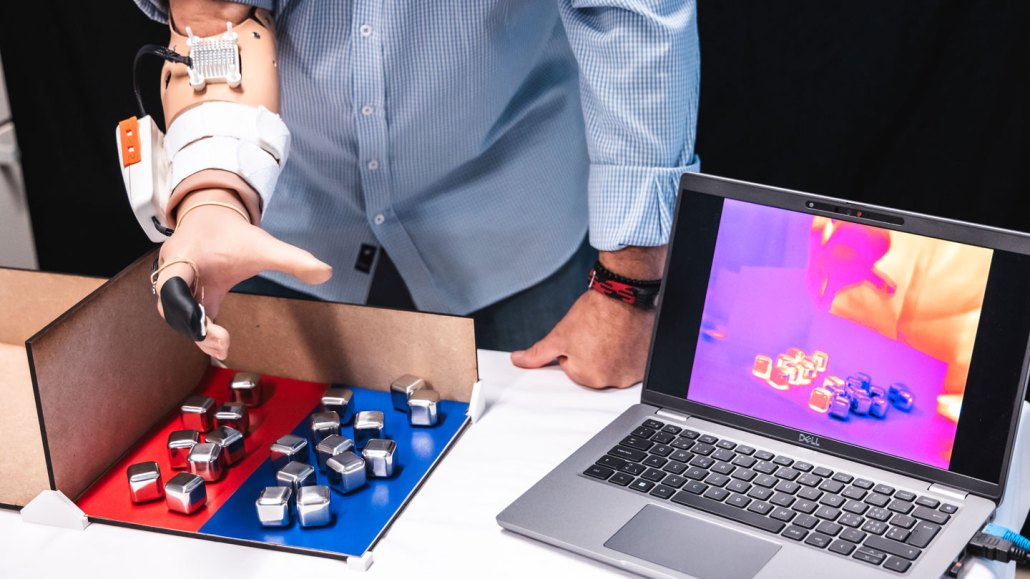A new device let a man sense temperature with his prosthetic hand
Ability to differentiate between cold, cool and hot objects advances efforts to restore touch

A sensor on the index finger of a man’s prosthetic hand connects to a spot on his arm that stimulates nerves once destined for the missing limb. The device made it possible for him to ace a sorting task: separate as many stainless steel blocks that are either cold (20° Celsius) or hot (40° C) as he could in one minute.
Jamani Caillet/EPFL